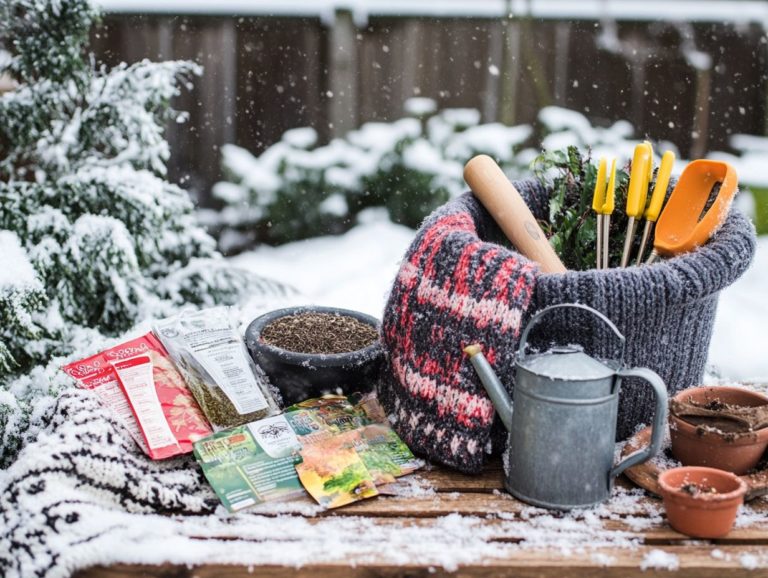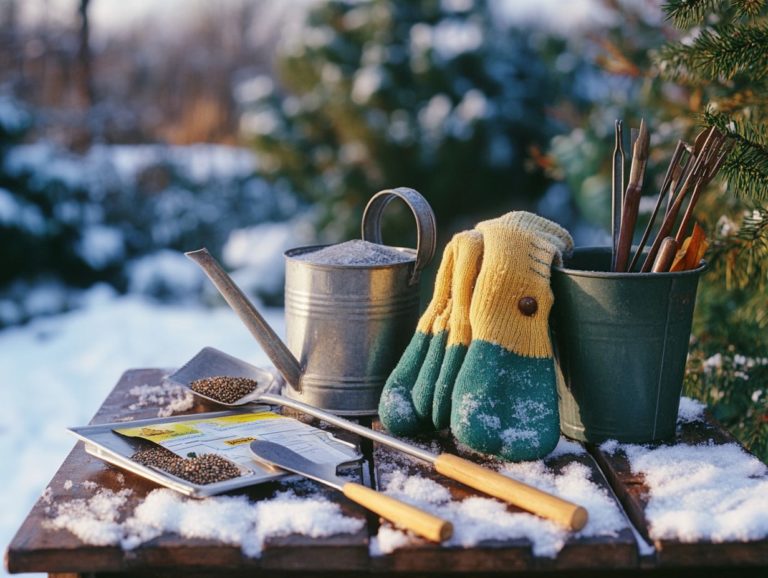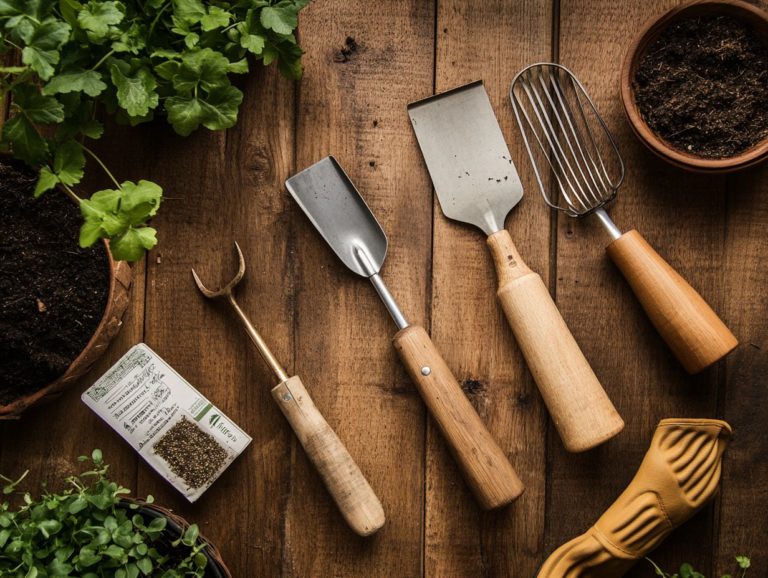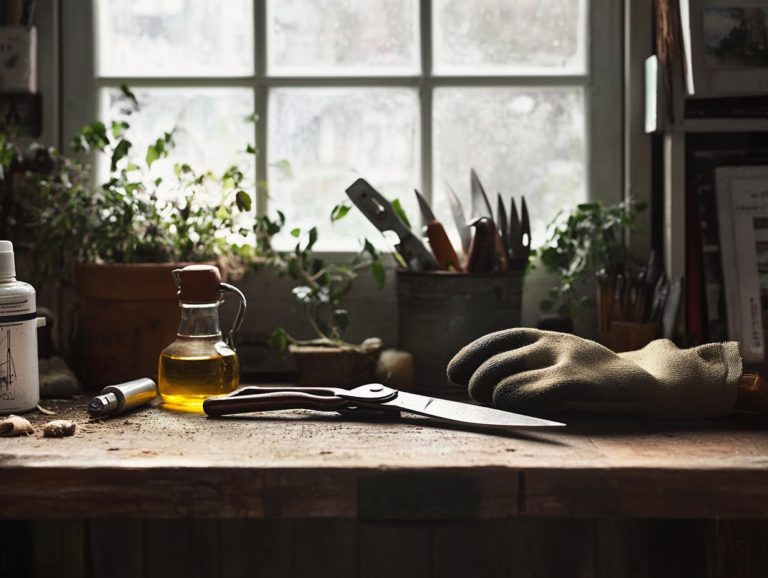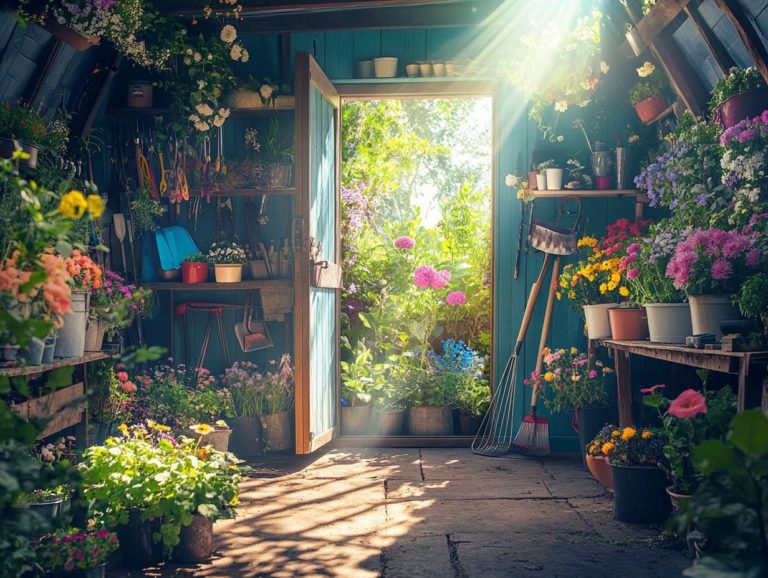How to Care for Indoor Plants in Winter
As winter approaches, the challenges of caring for your indoor plants become more noticeable. It’s crucial to understand how cold temperatures, diminished light, and dry indoor air can impact your leafy companions’ health and vitality.
This article serves as your guide to preparing your plants for the winter months, adjusting your watering methods, and ensuring they receive the light they need to thrive.
Winter pests and diseases can threaten your plants. Here are some tips and tricks to keep your plants flourishing until the warmth of spring returns.
Contents
- Key Takeaways:
- Why Winter Care Matters for Your Indoor Plants
- Preparing Your Indoor Plants for Winter
- Proper Winter Watering Techniques
- Providing Adequate Light for Indoor Plants in Winter
- Dealing with Common Winter Pests and Diseases
- Winter Plant Care Tips and Tricks
- Frequently Asked Questions
- How do I care for my indoor plants in winter?
- What is the ideal temperature for indoor plants in winter?
- How often should I water my indoor plants in winter?
- Do indoor plants need fertilizer in winter?
- How can I increase humidity for my indoor plants in winter?
- What should I do if my indoor plants get cold drafts?
Key Takeaways:
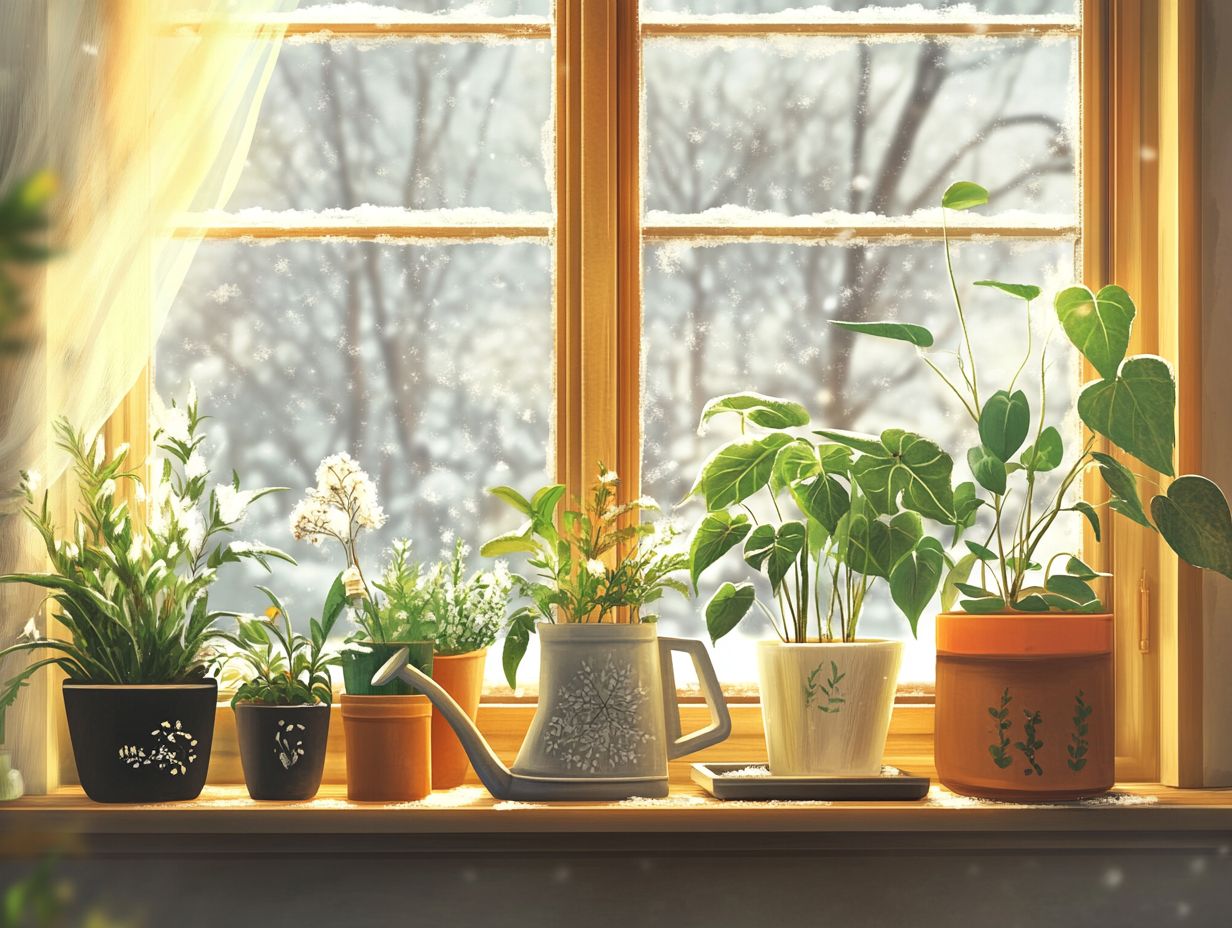
- Proper winter care is essential for the health and survival of indoor plants.
- Transitioning plants from summer to winter care is crucial for their well-being.
- Adjusting watering frequency, providing adequate light, and identifying common issues are key to keeping indoor plants healthy in winter.
Why Winter Care Matters for Your Indoor Plants
Winter care for indoor plants is essential. The colder months present unique challenges that can impact their health and growth. By understanding the seasonal care for overwintering plants, you can refine your gardening strategies, ensuring all your houseplants, including tropical beauties, flourish despite temperature extremes and fluctuating humidity levels.
Think about important factors like sunlight exposure, your watering routine, and regular pest inspections to create optimal conditions for your indoor garden throughout the winter season.
Understanding Winter’s Effects on Indoor Plants
Winter can significantly affect your indoor plants. Lower temperatures, reduced humidity, and diminished light can lead to issues like leaf drop and stunted growth.
As temperatures dip, many houseplants struggle to thrive, especially tropical varieties that love warmth. Fluctuations in humidity create a stressful environment for your plants, resulting in browning leaf tips and making them more vulnerable to pests. The lack of adequate light during winter can hinder photosynthesis, causing slow growth or pushing some plants into dormancy.
It’s essential for you, as a plant enthusiast, to monitor these changes and make necessary adjustments. Consider using grow lights or humidifiers to support your green companions, ensuring they thrive despite the colder months’ challenges.
Preparing Your Indoor Plants for Winter
Preparing your indoor plants for winter requires a thoughtful approach to ensure their vitality and resilience. This includes adjusting the potting mix and enhancing humidity levels, as well as learning how to protect your plants in cold weather to create an optimal environment for growth.
Transitioning from Summer to Winter Care
Transitioning your indoor plants from summer to winter care requires a thoughtful approach to adjust their watering routine, sunlight exposure, and overall maintenance, including maximizing light for indoor winter plants.
As temperatures drop, it’s vital to reduce watering, as many plants enter a dormant phase and need less moisture. Monitor the soil’s dryness; allowing the topsoil to dry out between waterings helps prevent root rot, which is when plant roots become overly saturated and start to decay.
With shorter days and less sunlight, consider moving your plants to brighter spots or using grow lights to ensure they receive adequate illumination. Implementing a plant rotation strategy can also enhance each plant’s exposure to available sunlight, helping them thrive despite seasonal challenges.
Proper Winter Watering Techniques
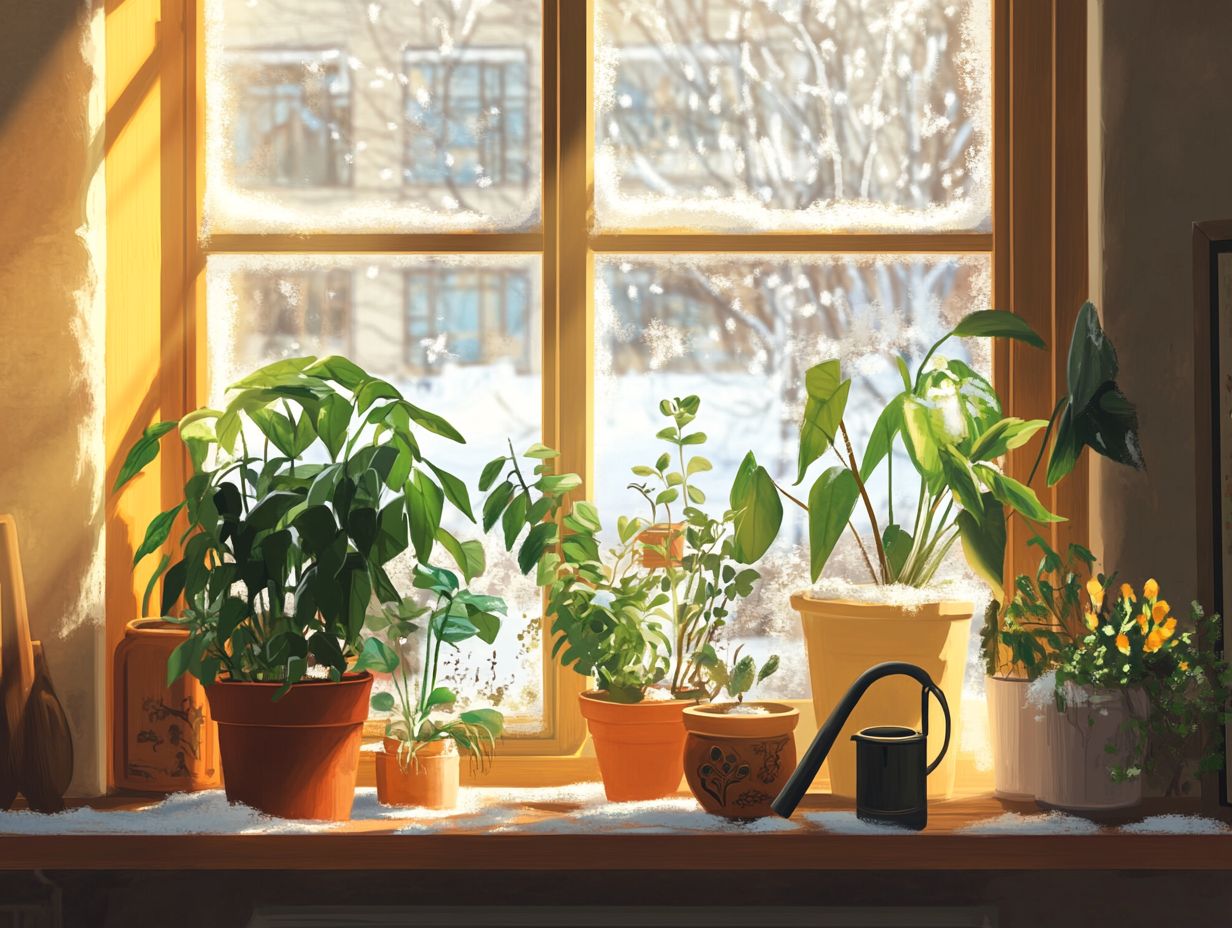
Mastering proper winter watering techniques is essential for preserving the vitality of your indoor plants. During the colder months, you can learn about maintaining moisture levels in winter gardens; finding the right balance is crucial—overwatering can lead to root rot, while underwatering can cause dehydration.
By paying close attention to your plants’ needs, you can ensure they thrive even in winter’s chill. Start implementing these tips on how to care for perennials in winter today to help your indoor garden survive the winter!
Adjusting Watering Frequency and Amount
Adjusting the frequency and amount of watering for your indoor plants during winter is crucial. For those interested in cultivating greens, following tips for growing microgreens in winter can help. Different species have distinct needs and often require less moisture when temperatures drop.
This is especially true for succulents and cacti. These plants flourish in arid conditions and are particularly prone to overwatering. Low humidity and cooler temperatures can create the perfect storm for root rot if you’re not careful!
To establish an optimal watering schedule, assess the humidity levels in your home (using a hygrometer, a device to measure humidity, is a smart move) as well as the temperature conditions where your plants reside. For drought-tolerant varieties like agave or aloe, significantly reducing watering is ideal. These resilient plants prefer to dry out completely between watering sessions.
Ensure your pots have good drainage and opt for a well-aerated soil mix. These practices can greatly enhance the health and longevity of your beloved plants!
Providing Adequate Light for Indoor Plants in Winter
It’s essential to ensure your indoor plants receive sufficient light during the winter months. With reduced sunlight exposure, their health and growth can falter!
Supplementing with Artificial Light Sources
Using artificial light sources, like grow lights, can significantly enhance your plants’ growth during the darker months. This ensures your indoor greenery receives the necessary light for photosynthesis!
To achieve the best results, familiarize yourself with the various types of grow lights. For instance, fluorescent lights are energy-efficient and work wonders for seedlings and leafy greens. Meanwhile, LED grow lights offer versatility and impressive lifespans, making them perfect for various indoor gardening projects. Although incandescent bulbs are less efficient, they provide warmth that can be beneficial during the flowering stage of certain plants.
Maximize the benefits of these lights by positioning them to complement natural sunlight. Adjust the light duration based on your plants’ specific needs. This approach can significantly enhance your indoor garden’s overall health!
Dealing with Common Winter Pests and Diseases
Managing common winter pests and diseases is essential for maintaining your houseplants’ health. During colder months, some pests thrive indoors, making careful checking and proactive management crucial!
Identifying and Treating Common Issues
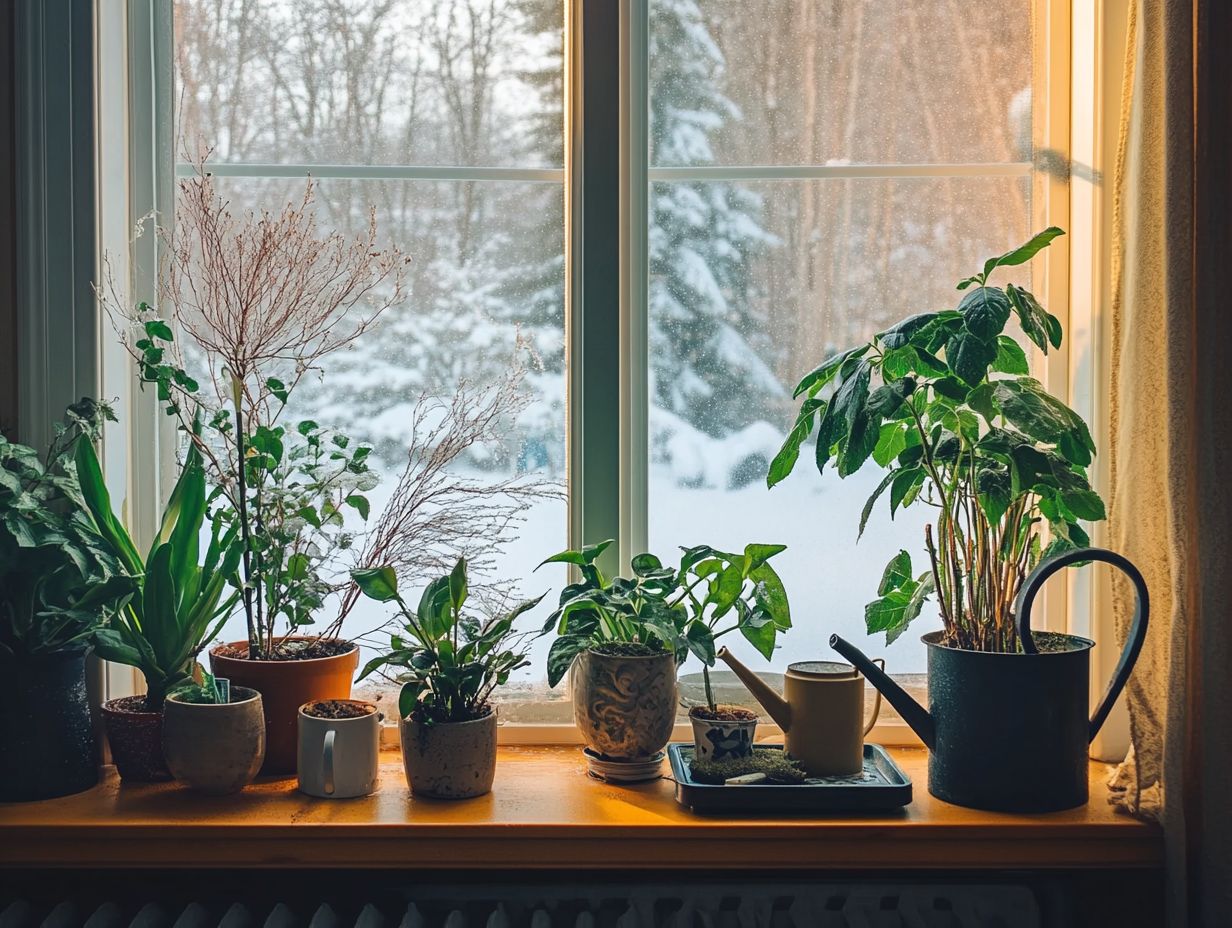
Identifying and addressing common issues like pests and diseases is crucial for maintaining the health of your indoor plants. Neglecting these concerns can lead to serious consequences!
The subtle signs of infestations can easily slip past your notice. Look out for physical indicators like yellowing leaves, distorted growth, or sticky residues these are clear signals that need your immediate attention.
Accurately diagnosing these issues will help you choose effective treatment options, whether it s insecticidal soaps or neem oil as natural remedies. Act quickly to preserve your plants’ vitality and prevent the spread of problems to nearby specimens!
Winter Plant Care Tips and Tricks
Winter plant care tips can truly transform your experience in maintaining indoor plants throughout the challenging winter months. To ensure they thrive with health and vibrancy, refer to our essential guidelines for winter plant care while exploring plant care products available in the market!
Insider Tips for Keeping Indoor Plants Healthy in Winter
To keep your indoor plants thriving during winter, embrace a few insider tips that focus on practical strategies. For instance, you might consider how to care for potted plants in winter, which include increasing humidity, maintaining clean foliage, and adapting to seasonal changes with a plant mister.
As temperatures drop, using a plant mister can be a game-changer for boosting humidity around your greenery. Indoor air tends to dry out in winter, and your plants will thank you for it!
Regularly cleaning the leaves helps prevent infestations and ensures your plants can maximize their ability to make food from sunlight. Don t forget to adjust your care routine for the season. This means reducing watering frequency and repositioning your plants to soak up the limited natural light.
These techniques make it possible to nurture your indoor plants through winter, including utilizing vertical gardening in winter, turning it into an attainable goal for every plant enthusiast.
Frequently Asked Questions
How do I care for my indoor plants in winter?
Now is the time to adjust your plant care routine for lower temperatures and less sunlight. Here are some tips:
What is the ideal temperature for indoor plants in winter?

Most indoor plants thrive in temperatures between 65-75 degrees Fahrenheit. During winter, keep your plants away from drafty windows or doors, and avoid placing them near heat sources like radiators or vents.
How often should I water my indoor plants in winter?
Adjust your watering schedule for winter. Since the air is drier and plants aren’t growing as actively, they won t need as much water. Allow the top inch of soil to dry out before watering, and use room temperature water.
Do indoor plants need fertilizer in winter?
In winter, plants won t need as much fertilizer as in warmer months. If you do fertilize, use a diluted solution and only fertilize once a month. Always read the instructions on your fertilizer for proper usage.
How can I increase humidity for my indoor plants in winter?
Indoor plants thrive in humid environments, but winter air can be very dry. To increase humidity, place a humidifier nearby or group plants together for a mini greenhouse effect. You can also mist your plants regularly or set them on a tray filled with pebbles and water.
What should I do if my indoor plants get cold drafts?
Cold drafts can harm indoor plants, causing them to drop leaves or even die. If your plants are near a drafty window or door, move them to a more protected area. You can also place a barrier, like a curtain or piece of cardboard, between your plant and the draft.

